Transformation of the National Archives Permanent Exhibition
Leading up to the 250th anniversary of the Declaration of Independence in 2026, the National Archives in Washington, DC is transforming its permanent exhibit galleries, education space, and theater to create a more welcoming and personalized experience for all visitors. As they journey through the galleries, visitors will discover and interact with records that have been among the most formative in our nation’s history, along with lesser-known stories.
Introductory Gallery

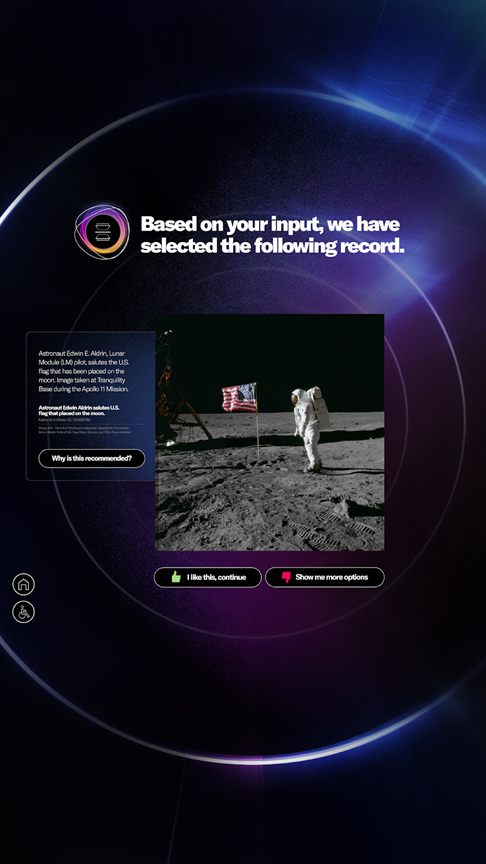
The entrance of the new permanent exhibition galleries will immerse visitors in a seemingly infinite display of holdings found within the National Archives. Eight digital portals in the Introductory Gallery will allow visitors to tailor the content delivered to them based on their personal interests and input throughout the exhibition’s interactives—from presidents and military history to women’s rights, space technology, and more. Throughout the new galleries, visitors can collect and save documents, images, and videos in their “digital backpack” to share after their visit.
Chartering Freedom
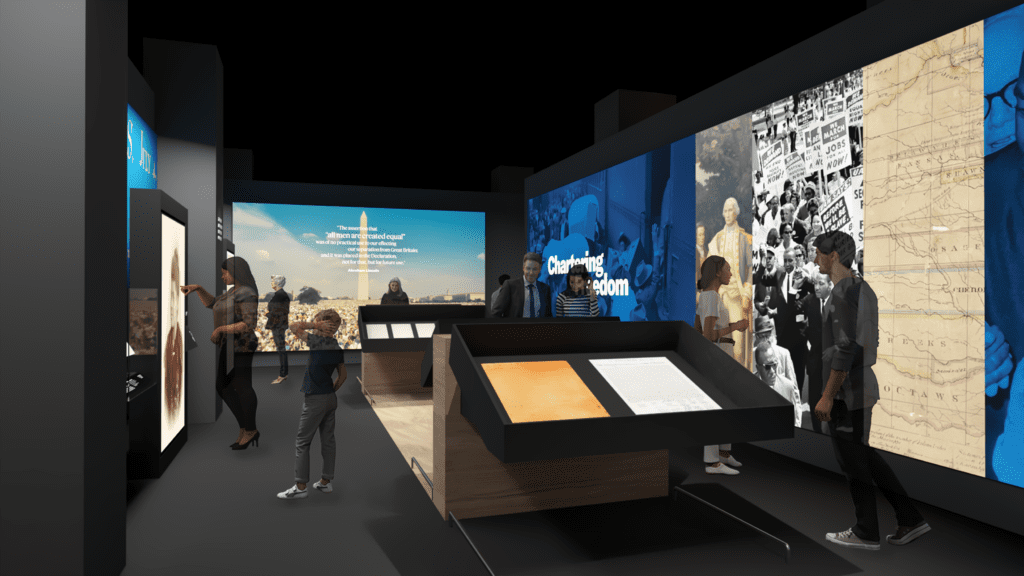
In Chartering Freedom, a display of an Emancipation Proclamation facsimile alongside the original 1823 copy of the Declaration of Independence from William Stone’s copper plate emphasizes that our national quest for freedom and equality did not end at the Battle of Yorktown in 1781. Here, visitors will encounter stories from diverse men and women who engaged in the ongoing struggle to build a more perfect union and pursue their personal life, liberty, and happiness. “Phygital” stations—which combine original physical documents with an interactive portal—will provide annotated explorations of the Charters of Freedom that link to related records, the events leading up to their creation, their legacies, and their lasting impacts. Visitors can watch and learn from compelling, first-person accounts tied to specific records at Meet the People stations. The perspectives shared in these accounts aim to highlight lesser-known voices from the Revolutionary War and Civil War eras, as well as those tied to more recent events from the 20th century.

Declaration of Independence Phygital
Land and Home

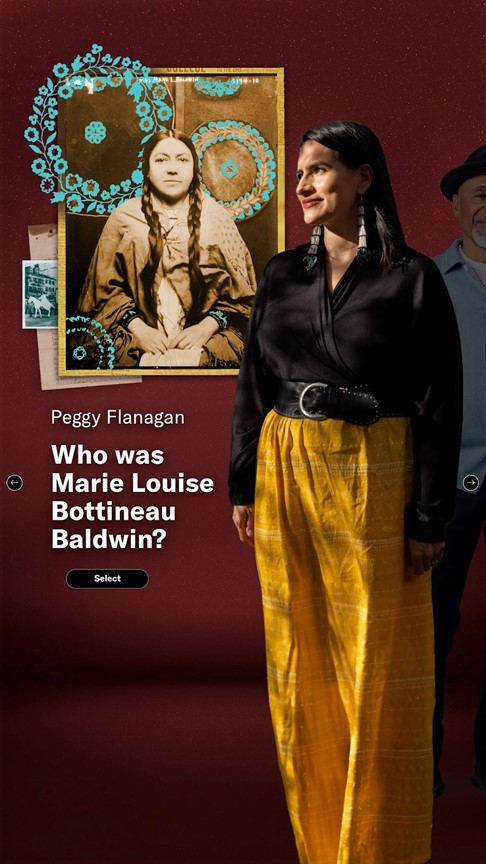
Juxtaposing the experiences of Indigenous peoples, free and enslaved Blacks, and European and Asian settlers with the federal policies that impacted them, the Land and Home gallery will explore the opportunities, promises, and costs of more than two centuries of geographic expansion and migration across the United States. The gallery will highlight an ongoing, rotating display of original treaties between the United States and Native Nations. Land and Home will also feature an interactive map of North America overlaid with projections inviting visitors to dive into stories related to the legal, societal, and circumstantial forces that led to the voluntary or forced movement of people. Through this map, featured treaties and records, and two Meet the People stations, visitors will discover how the people and communities affected by land expansion throughout America’s history reflect the diversity of this nation.
Picturing a Nation

Adjacent to the Land and Home gallery, the Picturing a Nation photography gallery will invite visitors to discover the history of America’s growth as it was captured by photographers working for various government agencies. Ongoing rotations of original photographs from the National Archives’ still-picture holdings feature beautiful and moving images that capture the diversity of the American landscape and the people who call it home. The first exhibition rotation will include Ansel Adams’s photographs of the National Parks and the American West.
A More Perfect Union

The ideals expressed in the U.S. Constitution are at the heart of the A More Perfect Union gallery. Here, visitors can take a closer look at the Founding Document—not only for what it says, but also for how it has changed through its self-prescribed amendment process. Upon entering the gallery, visitors will see five interactive stations exploring the U.S. government’s branches at work. These stations feature technology that allows visitors to examine reproductions of amendments and related documents behind transparent, interactive screens. The gallery will also include a “phygital” station featuring George Washington’s Annotated Copy of a Draft of the U.S. Constitution.
In Common Defense


Over half of all National Archives records relate to military and diplomatic affairs. While many of these records document America’s wars and conflicts, they also tell the larger story about the people behind these dramatic historical events. The In Common Defense gallery comprises two sections: Crisis and Conflict and Art of Diplomacy. These exhibits will explore the long history of American global engagement through an interactive military timeline and treaties showing the changing nature of U.S. foreign relations.
In the Crisis and Conflict gallery, visitors will find six pillar-like “blades” that feature touchscreen interactives with stories of military conflict told using images and video found within the National Archives. In the Art of Diplomacy gallery, a rotating display of presidential gifts from foreign dignitaries will demonstrate the range of nation-to-nation relationships over time.

Phygital of Benedict Arnold’s Oath of Allegiance (1778)
Uncle Sam Presents Theater

From the first government film capturing the Wright Brothers’ test flight to Smokey Bear’s lessons on preventing forest fires, to the calls to support war efforts and the awe-inspiring footage of astronauts on the moon, the government has used film to document, inform, and inspire. The Uncle Sam Presents Theater will present a short film with select examples of the diverse audio-visual assets from the National Archives’ motion picture holdings in an engaging cinematic experience.
Innovation Nation
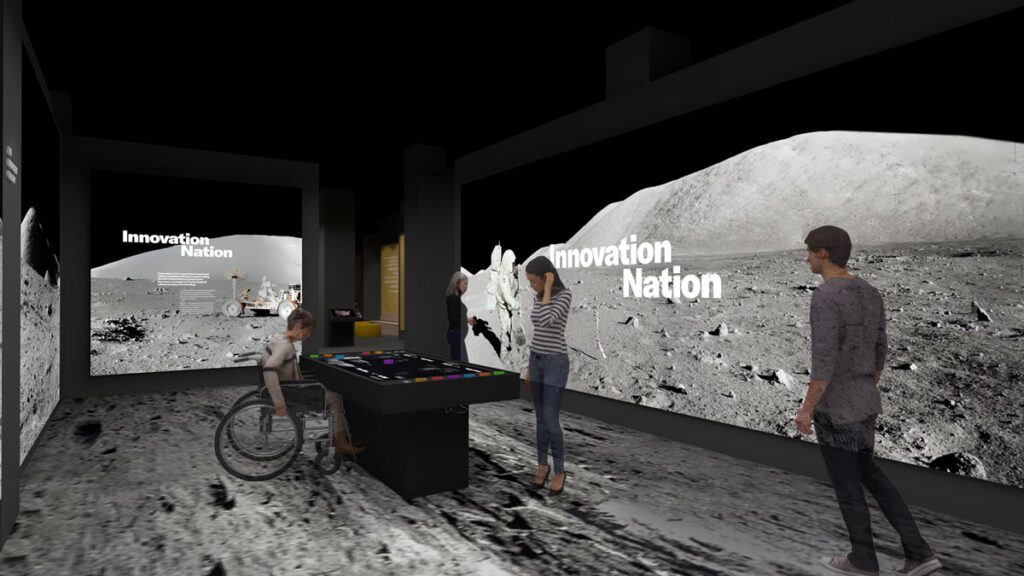
Innovation has been at the forefront since our republic’s earliest days. In the Innovation Nation gallery, visitors are “transported” to the moon’s surface, where they will discover how government-supported innovations—including the many created for space exploration—are all around us. In this gallery, visitors will approach an interactive table featuring seemingly unrelated physical objects. When visitors move these objects to activation zones on the table’s digital surface, this will trigger records found in the National Archives related to the object’s history and modern uses—from patents to images, videos, and more.
Spirit of Invention

The Spirit of Invention gallery will invite visitors to explore a sampling of the millions of records from the U.S. Patent and Trademark Office preserved in the Nations Archives. From Thomas Edison’s lightbulb to the original Barbie, to the bicycle and the artificial heart, patents on view will include incredible inventions that shaped the modern world—some related to recreation, entertainment, and everyday activities, and some whimsical and absurd patents that were never manufactured. The gallery will also include animations of patent drawings to help bring the patents to life.
Your Archives in Action

Most visitors to the National Archives recognize that its records are powerful. In the Your Archives in Action gallery, visitors will explore stories that illuminate the diversity and impact of the National Archives records. Curated content stations aim to showcase how Americans have claimed their rights of citizenship, held their government accountable, and learned from their history. Through a diverse selection of revelations made in the National Archives by everyday citizens, educators, and professional researchers, visitors will discover how the billions of records held in the National Archives can lead to discoveries that impact our personal lives and the future of our collective democracy.
Discovery Center

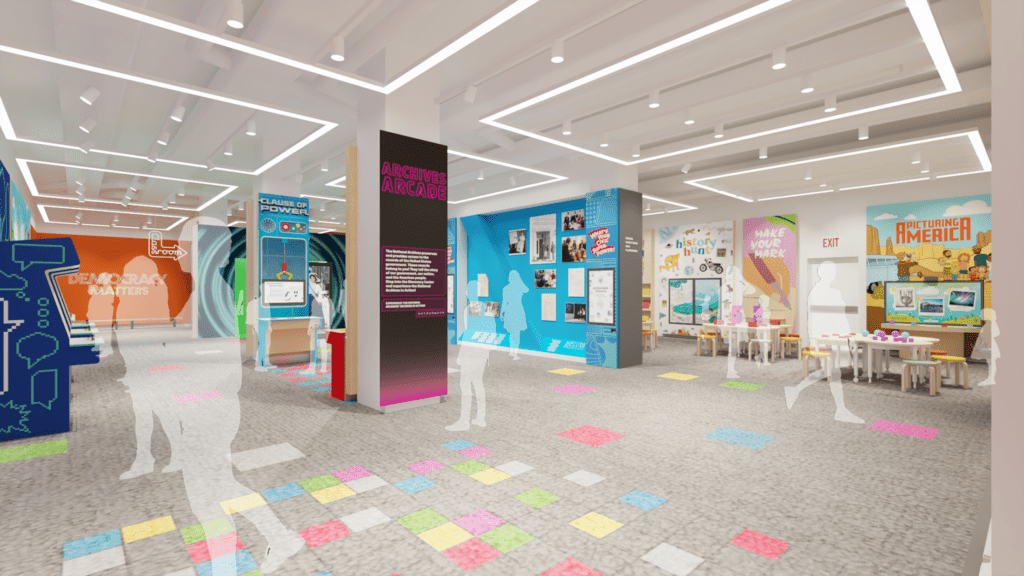
Visitors to the Discovery Center’s Archives Arcade will step into history through fun and engaging games, where they will exercise their First Amendment rights, promote Constitutional checks and balances, and much more. Guests are invited to have fun learning about civic engagement through the records of the National Archives.
The Discovery Center includes an activity space and classroom for the National Archives education team to host formal and informal educational programs and visiting school groups.
We hope to see you in Fall 2025 when we open these new spaces!
A donation today will directly support this once-in-a-generation transformation and future museum programming.
